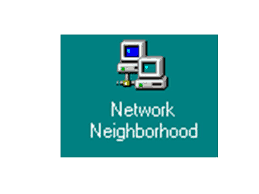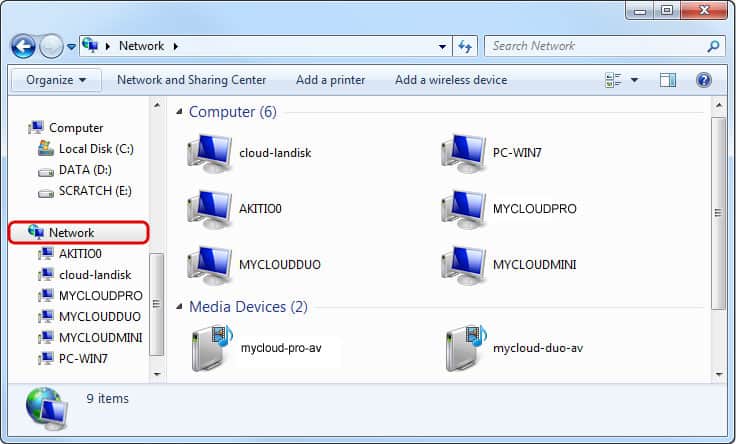Network Neighborhood, an iconic component of early Windows operating systems, served as a gateway for users to access and manage network resources. While it may seem like a relic from the past, this feature played a pivotal role in shaping how we interact with networked environments.
In this article, we delve into the essence of Network Neighborhood, its evolution through different Windows iterations, and its lasting influence on modern networking paradigms. Expect a journey from its fundamental concepts to the technological advancements that led to its transformation, offering insights not just for nostalgia but for a deeper understanding of network interfaces and their development.
In this article:
- What is Network Neighborhood?
- Evolution of Network Neighborhood
- Network Neighborhood in Modern Context
- Technical Analysis
- References
1. What is Network Neighborhood?
Network Neighborhood emerged as a feature in Windows 95, marking a significant stride in Microsoft’s efforts to integrate networking capabilities directly into the operating system’s user interface. Functioning as a visual tool, it enabled users to easily discover and interact with other computers and shared resources within their local network. This integration not only simplified network interactions but also democratized network access for non-technical users, making it a cornerstone in personal computing history.

Functionality of Network Neighborhood in Early Windows Versions
In its inception, Network Neighborhood primarily allowed users to browse and connect to shared folders, printers, and other resources on a local area network (LAN). It operated using protocols like NetBIOS and SMB (Server Message Block), standardizing the way resources were shared and accessed across Windows networks. This functionality was revolutionary, transforming the LAN browsing experience from a complex, command-line-driven task into a user-friendly, graphical interface.

User Interface and Experience
The user interface of Network Neighborhood was intuitive, displaying networked computers and resources as icons in a window. Users could double-click these icons to access shared files and devices. This approach not only visualized network structures but also embedded the concept of networked computing into the everyday user experience. It was a practical, straightforward interface that removed barriers, making network navigation an integral part of the Windows environment.
2. Evolution of Network Neighborhood
Transition to ‘My Network Places’ and Later Developments
With the advent of Windows 98 and more prominently in Windows 2000 and XP, Network Neighborhood evolved into ‘My Network Places‘. This change was more than just a rebranding; it reflected Microsoft’s ongoing commitment to enhancing network connectivity and usability. My Network Places introduced more robust features, better integration with Internet resources, and a more streamlined approach to accessing networked content.
Comparison with Modern Networking Interfaces
Today’s networking interfaces, seen in the latest Windows versions and other operating systems, are a far cry from the simplicity of Network Neighborhood. They offer more sophisticated tools for network management and connectivity, catering to the complex demands of modern networking. However, the fundamental principle remains the same: providing an intuitive, user-friendly interface for accessing network resources.
Technological Advancements Influencing These Changes
The evolution from Network Neighborhood to today’s network interfaces was driven by several technological advancements. The rise of the internet, the development of more secure and efficient networking protocols, and the increasing complexity of network structures necessitated a more dynamic and capable interface. These advancements have enabled seamless integration of local and internet resources, enhanced security measures, and support for a broader range of network activities, setting the stage for the modern networked world we interact with today.
In this transformation, Network Neighborhood served as a foundational model, demonstrating the importance of user-friendly interfaces in networking and paving the way for the sophisticated systems we use today.
3. Network Neighborhood in Modern Context
Similar Concepts in Current Operating Systems
The essence of Network Neighborhood lives on in modern operating systems, albeit under different names and functionalities. In Windows 10 and 11, for instance, the ‘Network’ option in File Explorer embodies the spirit of Network Neighborhood, offering network discovery and resource sharing in a more advanced and secure framework. Similarly, macOS and various Linux distributions incorporate features for browsing and accessing shared network resources, proving that the core concept of Network Neighborhood remains relevant and crucial in today’s networked world.
Nostalgia and Educational Value
For those who started their computing journey in the 90s, Network Neighborhood holds a special place, evoking nostalgia for a simpler era of networking. Beyond sentiment, it serves as an educational tool, helping current generations understand the evolution of network interfaces and appreciate the advancements in technology. By studying its design and functionality, students and newcomers to the field gain valuable insights into the basics of network sharing and discovery, forming a foundational understanding upon which modern networking knowledge is built.
Network Discovery and Sharing in Modern Networks
Today, network discovery and sharing have become more sophisticated, driven by the need for greater security and efficiency. Modern networks, often complex and expansive, require advanced tools for managing connections and sharing resources. Current systems leverage newer protocols and technologies, offering enhanced capabilities like seamless integration of cloud services, advanced user permissions, and automated network configuration. These features reflect the ongoing evolution of network interaction, a journey that began with simple tools like Network Neighborhood.
4. Technical Analysis
How Network Neighborhood Worked Under the Hood
Network Neighborhood functioned by using a master browser system within a local area network (LAN). When a user opened Network Neighborhood, the system would query the master browser—a designated computer on the network—for a list of all connected devices and shared resources. This master browser, elected from the networked machines, kept an updated directory of all network members and shared resources, facilitating the discovery process.
Protocols and Services Involved
The primary protocols powering Network Neighborhood were NetBIOS (Network Basic Input/Output System) and SMB (Server Message Block). NetBIOS provided identification and location services on a local network, while SMB was used for sharing files and printers. These protocols were fundamental in establishing communication and resource sharing among Windows computers, forming the backbone of early Windows networking.
Security Aspects and Limitations
While revolutionary for its time, Network Neighborhood’s reliance on NetBIOS and SMB also brought security challenges. The protocols, particularly in their earlier versions, were not designed with modern security threats in mind. Issues like easy interception of data, vulnerability to malware, and the potential for unauthorized access were significant concerns. As networking technology progressed, these limitations prompted the development of more secure protocols and networking methods, leading to the more robust systems in use today.
6. References
- Books:
- “Windows NT Networking Guide” by Microsoft Press
- “Networking Essentials” by Jeffrey S. Beasley and Piyasat Nilkaew
- RFCs: